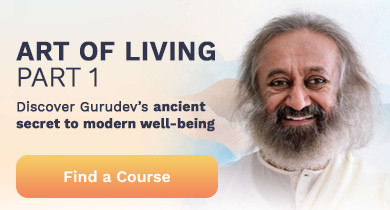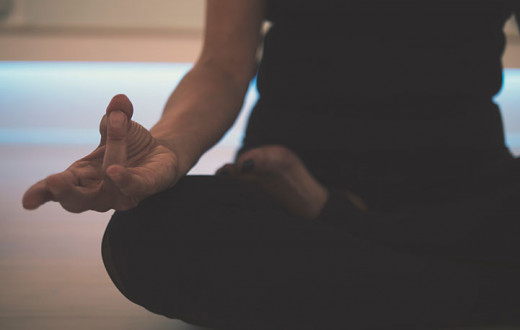By Sejal Shah
Debating between mindfulness vs meditation and unable to decide? Read on to find out about both and pick one (or both!) that best suits your needs.
Are mindfulness and meditation the same?
If they are the same, why are there two different terms?
If they are different, what is the difference between them?
I want to calm my mind, but what do I practice; mindfulness or meditation or both?
How do I choose? What is good for me? What is easy? How do I learn?
Can somebody simplify these two, please?
Are these your questions and like so many are you sailing in the “confusion boat” too?
Well, we hear you and we are here to help you...
The internet is flooded with information about mindfulness and meditation. This information sometimes makes sense but most of the time it is misleading and contradicting. For individuals who are starting from square one with their practice, this can be very confusing.
While mindfulness and meditation are interrelated, they are not the same. Both the terms are frequently used interchangeably and incorrectly, and sometimes, in the most simplified way, most often refer to the same general thing — calming your monkey mind.
The differences between mindfulness and meditation have been debated and interpreted in many ways. They very often overlap. At the same time, each has its own specific definition and purpose. So a basic understanding of the differences between these two concepts is necessary. This can help you carve out a practice that meets your needs.
Let’s get more clarity.
What is mindfulness?
According to mindful.org,
“Mindfulness is the basic human ability to be fully present, aware of where we are and what we’re doing, and not overly reactive or overwhelmed by what’s going on around us”.
While mindfulness is something we all naturally possess, it’s more readily available to us when we practice it daily.
Whenever you bring awareness to what you’re directly experiencing via your senses, or to your state of mind via your thoughts and emotions, you’re being mindful. And there’s growing research showing that when you train your brain to be mindful, you’re actually remodeling the physical structure of your brain.
The goal of mindfulness is to wake up to the inner workings of our mental, emotional, and physical processes.
What is meditation?
According to Gurudev Sri Sri Ravi Shankar, world-renowned spiritual teacher and meditation master, “Meditation is the delicate and effortless art of doing nothing. It is the skill to take a deep rest while being conscious and alert. Beyond all the chatter and noise in our mind, there is a silent, peaceful, blissful, beautiful space that exists in all of us, a place that is intact and unbroken. Turning our attention to this silent chamber is meditation. This silence cleanses the mind, giving it a much-needed rest, and makes room for better perceptions and new ways of looking at life and its challenges.”
Meditation is tapping into the naturally occurring state of mind or consciousness. A vast research study has backed its positive impact on the brain, heart, and the whole body-mind complex.
The goal of meditation is to let go of all the goals for the time being and just relax into your natural self. We need to allow this ‘letting go’ phenomenon to happen and it is blissfully empowering.
History: Where do mindfulness and meditation originate from?
The roots of these practices are different. Mindfulness originated in the Buddhist tradition and was popularized in the West by writers such as Jon Kabat-Zinn, Pema Chodron, and Thich Nhat-Hanh. Meditation originated in the Vedic and yogic tradition in India and is related to Hinduism dating from 1700-1100 BCE. Later on, different forms of meditation began developing in Buddhism and Taoism, mainly in India and China. It was brought to the West by Maharishi Mahesh Yogi, Gurudev Sri Sri Ravi Shankar, Deepak Chopra, and many other respected meditation teachers.
In ancient times, the purpose of meditation was ultimate liberation (or nirvana), spiritual growth, and transcending the mind to live in a calm present state of perfect harmony and equilibrium. Mindfulness is not a substitute for meditation. After being introduced to the West in the 20th century, meditation has been realigned and categorized to match the goals of modern, secular society — and it became a proven way to reduce stress, anxiety, chronic pain, and improve your overall physical and mental health.
According to Medical Daily, as meditation evolved after coming to the West, it has become a large umbrella term that encompasses the practice of reaching ultimate consciousness, to transcend the mind, improving concentration, acknowledging the mind, and, in a way, self-regulate it. It can involve a lot of techniques or practices to reach this heightened level of consciousness — including compassion, love, patience, and of course, mindfulness. So mindfulness is now known as a type of meditation, alongside mantra, tantra, silence, breathing, and emptiness. But mindfulness by itself is not a substitute for meditation.
Though all of these don’t necessarily fall under the classic definition of meditation as per the yoga texts, the internet lists out them under the umbrella of meditation:
Mindfulness meditation
Spiritual meditation
Focused meditation (like Vipassana meditation)
Insight meditation
Movement or walking meditation
Guided meditation (Try one now!)
Vedic or Mantra meditation (like Sahaj Samadhi Meditation and Transcendental Meditation)
Progressive relaxation
Loving-kindness meditation
Visualization meditation and guided imaginary
Breathing meditation (like SKY Breath Meditation)
Hollow and Empty meditation
There are many different types of meditation in the modern days, each with different qualities and specific practices that lead the meditator in different directions of self-development. Choosing a meditation technique and cultivating a meditation practice requires an understanding of one’s goals, as well as an understanding of what each type of meditation provides. This article is written to provide clarity so that you can begin or continue the journey toward your personal mindfulness and meditation goals. Out of these, I have tried a few, I have explained them briefly here.
How mindfulness and meditation are different?
1) Process: being aware of the mind vs transcending the mind
Mindfulness is the act of focusing on being in the present, for example focusing completely on eating a grape or apple, taking in its flavor, texture, and taste, being aware of every bite that you chew, and thus reducing the effects of other overpowering emotions from the mind. John Kabat-Zinn 1994, one of the most popular Western writers on this topic and creator of the Mindfulness-Based Stress Reduction program (MBSR), defines mindfulness as “the awareness that arises through paying attention, on purpose, in the present moment, non-judgmentally.”
Meditation is effortlessly transcending the mind and connecting with the pure consciousness that we are.
To transcend the mind means to go beyond all mental activity, all thoughts, sensations, and perceptions, to experience the silent or blissful state of the Self or the energy field within us. This transcendental state is also known as the fourth state of consciousness. It is not a trance-like state or form of self-hypnosis, but a settled, peaceful, expanded state of awareness. This state is completely natural to every human nervous system just like waking, dreaming, and sleeping state is natural to us.
Transcending is the natural process of diving inward, beyond thought, beyond all mental activity, just to be in the state of pure awareness or restful alertness — accessing your deepest inner reserves of energy, creativity, and intelligence. This process is different from watching your thoughts, focusing on your breathing, concentrating, guided meditation, or being mindful — and scientific research shows it produces different results as confirmed by EEG brainwave research. Just as the waking, sleeping, and dreaming states have their benefits, being in the fourth state (in Sanskrit it is known as turiya avastha) has its own benefits on the body-mind-spirit complex and much more profound than the other three states.
It is important to understand that not all the above-listed meditation techniques can get you to the state of transcendence. The Sahaj Samadhi Meditation and Transcendental Meditation and to a great extent SKY Breath Meditation help achieve that state of pure consciousness. In this article, I am referring to meditation only in the context of transcendence.
2) The state of the mind: active vs no-mind
During mindfulness, the mind is focussed, alert, active, you are actively watching the mind and not allowing it to wander to be fully present in the moment or with the activity that you are doing. If the mind drifts away, you bring it back to the activity like breathing, eating, drinking, walking, painting, or whatever you are doing. Basically, mindfulness keeps the mind engaged, usually on the gross, surface level of the individual’s thought processes or activity. This tends to keep the mind active in the waking state of consciousness and does not effectively promote the transcending state of consciousness (the fourth state).
During meditation, the mind is expanded and becomes no mind! If the active mind is like waves on the surface of the ocean, then meditation is like diving into the silent depths (underwater) of the ocean, the wave merging with the ocean, becoming one with the ocean. The individual mind unites with the universal mind. The mind comes to a state of complete rest, yet remains fully alert. This state is described as a reservoir of unlimited energy, bliss, and intelligence — the essential nature of the mind, one's deepest, inner Self. This may sound a bit mystical and beyond comprehension. It is indeed. You need to meditate to experience this, words may not explain this fully.
3) Level of ease: effortful vs no efforts
Mindfulness requires some effort to be present, to be aware, to focus.
Whereas classical or traditional meditation is the effortless and delicate art of doing nothing. In fact, so delicate that any effort could prove to be counterproductive. When you do nothing, the mind automatically settles inward on its own and all mental activities gradually cease and you experience the so-called state of thoughtlessness (or less thoughts). Or rather, your thoughts stop bothering you. Meditation isn’t meant to be a forced thing, if we’re forcing it, then it becomes yet another chore. Effortlessness is the key!
For some people, mindfulness becomes a difficult, challenging, tiring, and boring practice over a period of time. The easiness of meditation keeps it going, the gentle and regular practice eventually becomes supportive, sustaining, and enjoyable.
4) Thoughts: watching vs letting go
Being mindful of your thoughts keeps you in full awareness of your thinking process.
During meditation, you just let go of the thoughts just like clouds pass by in the sky. Just let them be without wanting to control the mind.
5) Time: focus vs vastness
Mindfulness is being fully aware and focussed on the activity at hand at this moment. It brings the mind to the present moment.
Meditation is fathoming the vastness and depth of the present moment, aligning or expanding the mind to the reality of the all-pervading consciousness, becoming aware of the higher truth, broader vision. You seem to get absorbed into it and you almost lose the sense of time.
6) Benefits: self-awareness vs self-transcendence
There are many of the benefits of both mindfulness and meditation, and many overlap as far as your physical and mental health is concerned. Improved mindfulness is one of the major benefits of meditation. If your goal is to improve your self-awareness, both mindfulness and meditation can be helpful. Yet meditation offers an added experience of a profound state of stillness and bliss, the self-transcendence! This gives such a deep rest to the mind, even deeper than the deep sleep. This rest is what your frenzied mind is seeking for. Gurudev Sri Sri Ravi Shankar often says that mindfulness is a doorway to meditation. While mindfulness brings you to the door of your home, meditation brings you home.
How to learn mindfulness?
Mindfulness can be learned through reading a book or attending an informal or community-run mindfulness practice class. It can also be learned through participation in a clinical program, such as Mindfulness-Based Stress Reduction.
Try this 10-minute breathing mindfulness technique:
Sit in a comfortable place with clean and quiet surroundings
Keep your spine straight, but not too strained; body relaxed
Place hands on the knees or thighs with palms facing the ceiling
Become aware of the body. Take attention to the body, observe if there is strain, tension, or sensations anywhere in the body
Bring your awareness to your breath. Observe how the breath is flowing through the nose to the abdomen and back out of the nose. Just be mindful of your breathing
Continue to keep the focus on the breath for 10 minutes. Notice if your attention starts to wander (thoughts or any other distractions), bring the attention back to the breath so that you are fully present with your breathing only
In this exercise, we used breath as an anchor. When the focus is on the breath, the mind comes to the present moment. After a few days of the same practice, you can begin observing everything that happens inside and outside. The practice will facilitate this state of observance.
Eventually, the point is to extend mindfulness to every moment in the day. It can be practiced while walking, eating, working—any task during the day. Being fully present with what you are doing.
How to learn meditation?
Though there are many meditation apps out there, it is best to learn meditation with a trained instructor who is available to guide you or mentor you as and when necessary.
The Art of Living Foundation offers teachings in breath-based meditation, mantra-based meditation as well as Hollow and Empty meditation through trained and experienced teachers. The Hollow and Empty meditation is the hallmark of Art of Living’s signature Silent Retreats and is an advanced level program. Whereas the SKY Breath Meditation and Sahaj Samadhi Mantra Meditation are beginner-level programs.
A 2019 study at Yale University evaluated the impact of three well-being programs on undergraduate students: SKY Breath Meditation, Mindfulness-Based Stress Reduction, and Emotional Intelligence, compared to a control group. Of all the programs, SKY Breath Meditation had the most benefits—reducing stress and depression, enhancing mental health, social connection, mindfulness, and positive emotions.
Beyond Breath
If you would like to get the taste of meditation with a certified instructor on a live online session, I would recommend you to join Beyond Breath. You will also know more about SKY Breath Meditation.
Bottom line
Mindfulness is not a replacement for meditation. If you are meditating, you will become more mindful in all aspects of your life. But just the practice of mindfulness may not give you the deeply profound experience that meditation offers. Mindfulness or meditation (or both), the choice is yours, blessings are ours!
Irrespective of what you choose, BE HAPPY!
Sejal Shah, E-RYT 500 Sri Sri Yoga Teacher, YACEP, C-IAYT, Meditation Teacher, SKY Instructor, NYU Post Graduate Medical School approved Yoga-CME retreat facilitator, Mind-Body Wellness Writer, Homeopath. She can be followed on YouTube, Instagram, Twitter, and Facebook.





























